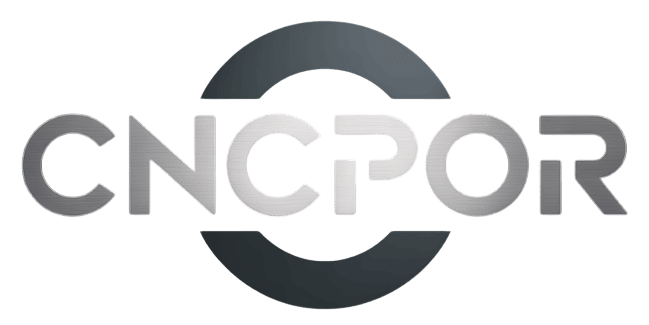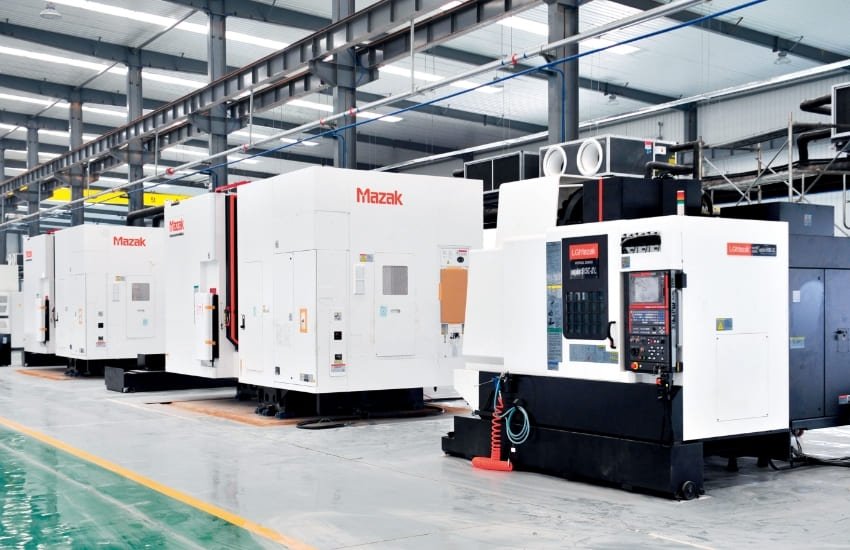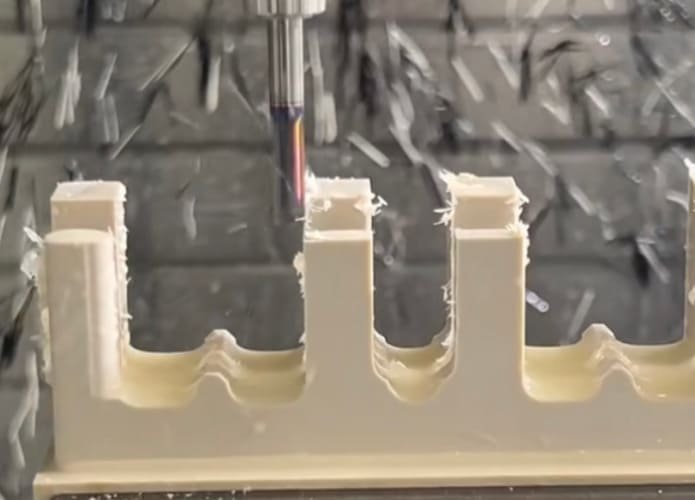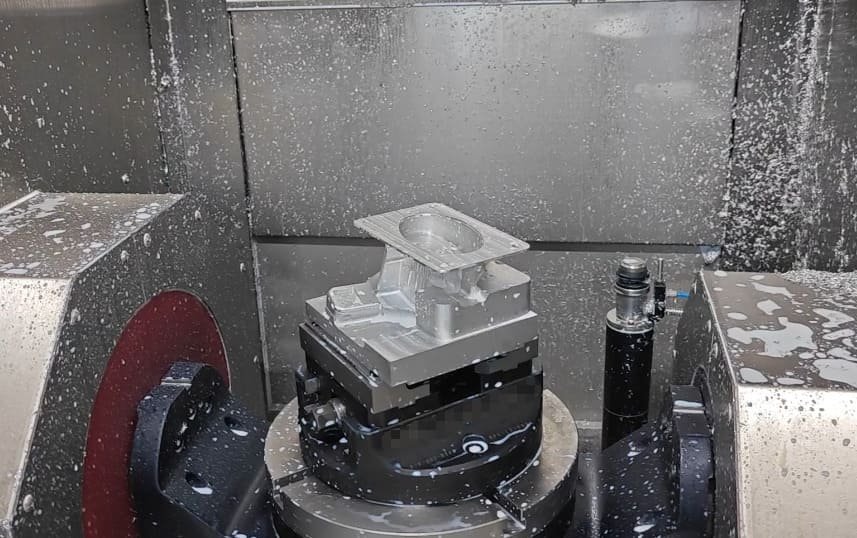Not every automated tool is a CNC machine. So, what exactly turns a regular machine into a CNC? CNC stands for Computer Numerical Control. That means the machine follows a set of precise instructions (usually written in G-code) to cut, shape, or move a material without human intervention guiding it. The computer handles all the fine details, movement speed, depth, and angle, so the result comes out the same every time.
A proper CNC machine always includes a few key parts:
- Controller – This is the brain. It reads the code and tells the motors what to do.
- Drive systems – These control movement along different axes (X, Y, Z, and sometimes more).
- Machine frame or base – This holds the whole setup together and keeps it stable during operation.
- Cutting or shaping tool – This depends on the machine: it could be a spinning mill, a laser head, a waterjet nozzle, or even a welding torch.
Main Categories of CNC Machines
Before exploring specific types, it is helpful to understand the general categories into which most CNC machines fall. These categories are based on how they operate and the type of work they’re designed for.
Subtractive CNC Machines
These start with a solid block and remove material by cutting, drilling, or grinding. CNC mills, lathes, routers, and grinders all fall into this group.
Additive CNC Machines
Instead of cutting material away, these machines build parts layer by layer. CNC 3D printers are the best example. They’re great for plastic, resin, and even metal parts in some setups.
Hybrid CNC Machines
These combine subtractive and additive processes within a single system. For example, a machine might 3D print a part and then mill it for smooth surfaces or tight tolerances.
Common Types of CNC Machines and What They Do
CNC machines come in various types, each designed for specific tasks, ranging from cutting metal sheets to carving fine details in plastic or wood. Choosing the right one depends on the material, part shape, and the required precision level. Most CNC machines offer high accuracy, with different machining tolerances, depending on the setup and application. Read our guide on CNC machining tolerances for a better understanding.
Let’s take a closer look at the most common types of CNC machines and how they work:
1. CNC Milling Machines
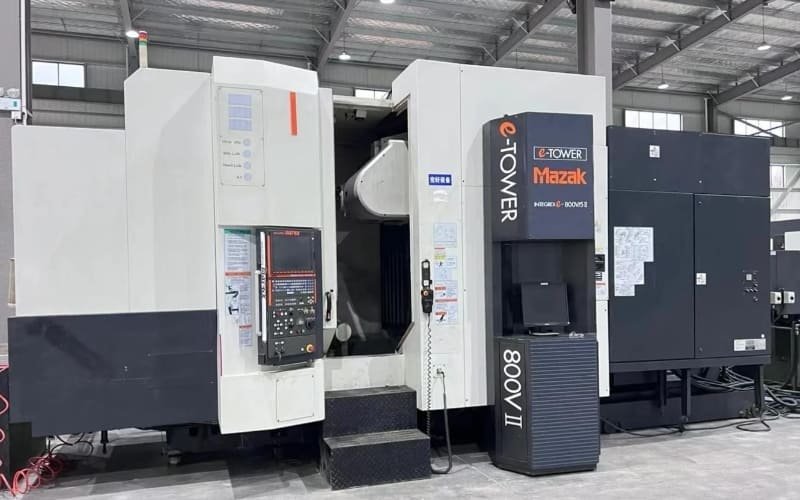
CNC milling machines use rotating cutting tools to shape solid materials like metal, plastic, or composites. They move the tool along multiple axes (usually X, Y, and Z) to create holes, slots, and complex 3D surfaces.
Vertical mills are the most common. They’re used for jobs like drilling, facing, and contouring flat surfaces. Horizontal mills, on the other hand, mount the spindle sideways, which is better for heavy-duty cuts and removing material fast.
For complex parts, especially in aerospace or medical applications, 5-axis mills allow the tool or table to tilt and rotate. This helps reach tricky angles and reduce setups, improving accuracy and production speed. They’re widely used in prototyping, mold making, and production machining across various industries.
2. CNC Lathes and Turning Centers

CNC lathes are designed to shape cylindrical parts. They work by rotating the material (the workpiece) while a cutting tool moves into it to remove material. This makes them ideal for creating round components, such as shafts, pins, threads, and bushings.
Standard CNC lathes handle tasks like turning, facing, grooving, and threading. But when the job gets more complex, turning centers step in. These machines are more advanced and come with multiple axes, live tooling (tools that spin while cutting), and sub-spindles. That means they can drill, mill, and tap on the same setup. So, there’s no need to transfer the part to another machine.
Industries such as automotive, aerospace, and medical often utilize them. When choosing between a standard lathe and a turning center, the decision typically comes down to the complexity of the part and the level of automation desired.
3. CNC Routers
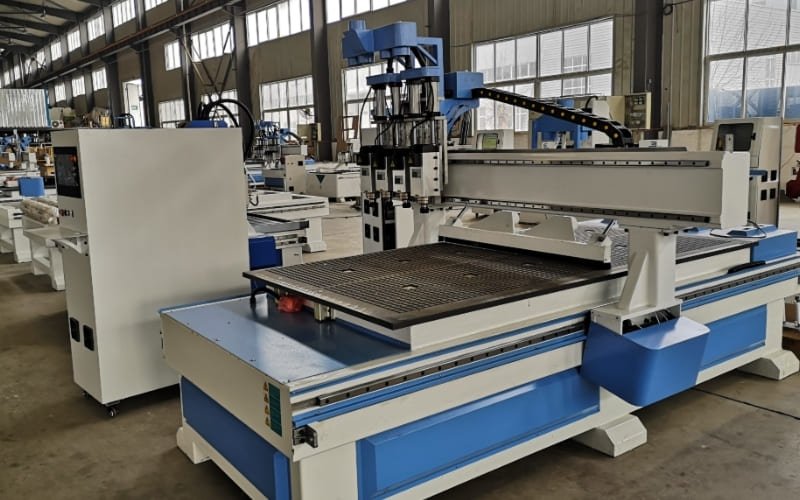
CNC routers are designed for cutting and shaping softer materials, such as wood, plastic and foam. They usually come with 3 axes. But more advanced models offer 4 or 5 axes for added flexibility in carving 3D shapes or angled cuts. Most routers are equipped with vacuum tables or clamps to hold materials in place, and some feature automatic tool changers for faster production.
Unlike CNC mills, which are built for heavy-duty metal cutting, routers operate at much higher spindle speeds, often up to 24,000 RPM, to quickly carve out detailed shapes and patterns in large sheets or blocks. These machines are widespread in woodworking, cabinetry, sign making, and furniture production.
4. CNC Swiss-Type Lathes
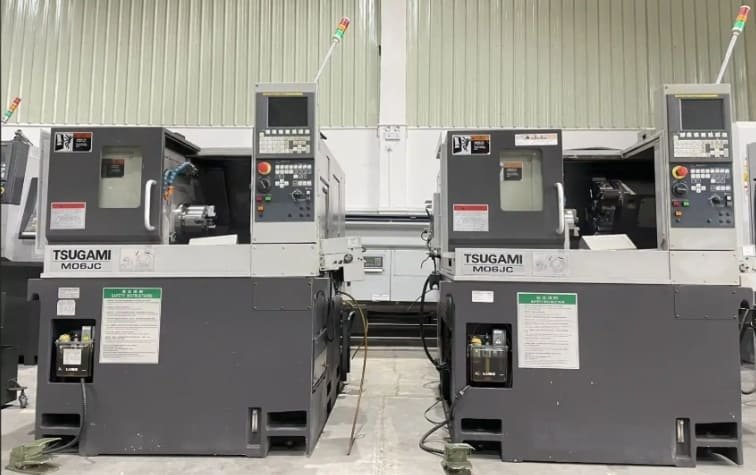
CNC Swiss-type lathes are designed for high-precision machining of small, slender parts such as medical implants, watch components, and aerospace fasteners. What makes them unique is the way they feed the material: the bar stock slides through a guide bushing, staying close to the cutting tool at all times. This setup reduces deflection and vibration, even when working on long, thin parts.
Most Swiss lathes have multiple axes (sometimes up to 12) and come equipped with live tooling, which enables them to drill, mill, or tap without removing the part from the machine. They often run unattended for hours, making them ideal for the mass production of tiny, detailed components, especially in medical, electronics, and aerospace fields.
5. CNC EDM Machines
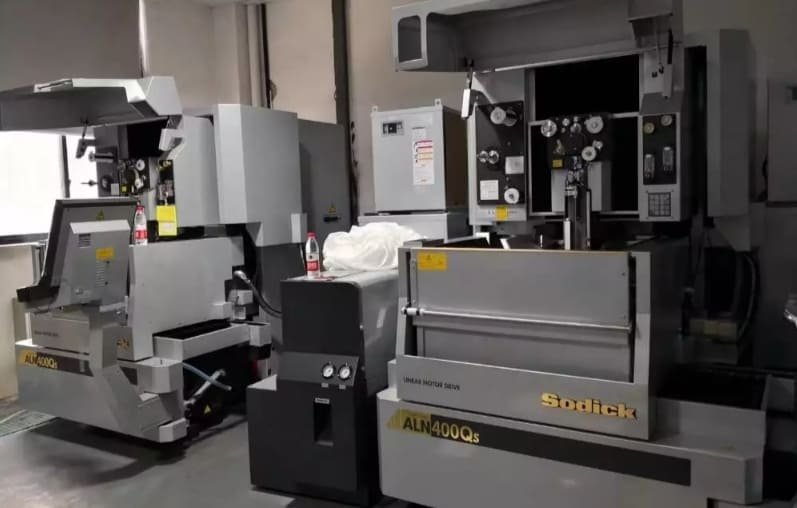
CNC EDM (Electrical Discharge Machining) is a non-contact method used to machine electrically conductive materials with extreme precision. Instead of using a cutting tool, EDM works by sending electrical sparks between an electrode and the workpiece. These sparks generate intense heat, melting away material in microscopic layers. It’s ideal for hard metals, deep cavities, and fine features that are too difficult to machine with traditional methods.
There are two main types of CNC EDM machines:
- Wire EDM (Wire-Cut EDM)
Wire EDM uses a thin, continuously moving wire, usually made of brass or copper, to cut through the workpiece. The wire never touches the material; instead, a spark discharge erodes the metal in a controlled path. This method is perfect for tight tolerances, intricate shapes, and internal cuts. - Sinker EDM (Ram EDM or Cavity EDM)
Sinker EDM uses a custom-shaped electrode, often made of graphite or copper, that is “sunk” into the workpiece. It’s commonly used to produce deep cavities, detailed mold features, and complex internal geometries. The process is slower than wire EDM, but it is highly accurate and works well for creating dies and molds for plastic injection molding or metal stamping.
6. CNC Plasma Cutters
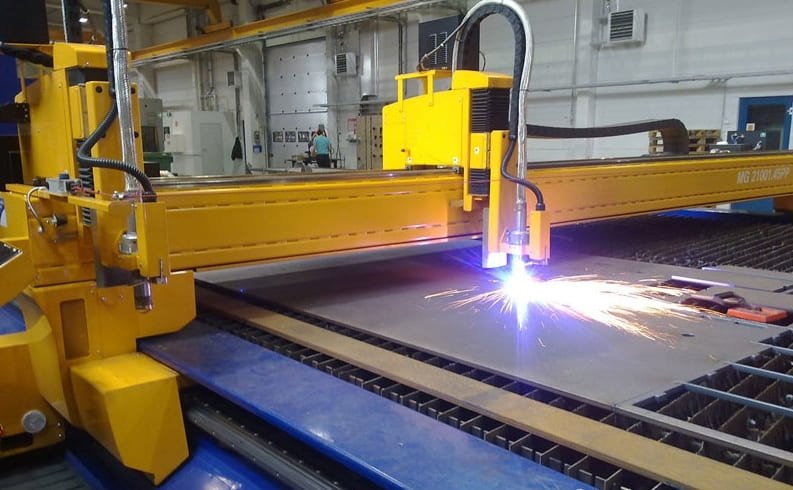
CNC plasma cutters use a high-temperature plasma arc to cut through electrically conductive materials like steel, stainless steel, and aluminum. These machines work by sending a compressed gas (such as air, nitrogen, or oxygen) through a small nozzle while an electric arc forms plasma, which is hot enough to melt metal instantly.
Because the plasma jet moves quickly and cuts cleanly, plasma cutters are ideal for working with thick materials and high-speed jobs. They can slice through metal plates up to 1.5 inches thick at cutting speeds of 20 to 60 inches per minute, depending on the power source and material type.
They’re best suited for flat sheet cutting, although newer 3D-capable systems are emerging. The tolerances aren’t as tight as those from a laser cutter, but they’re more than enough for many fabrication and structural jobs.
7. CNC Waterjet Cutters
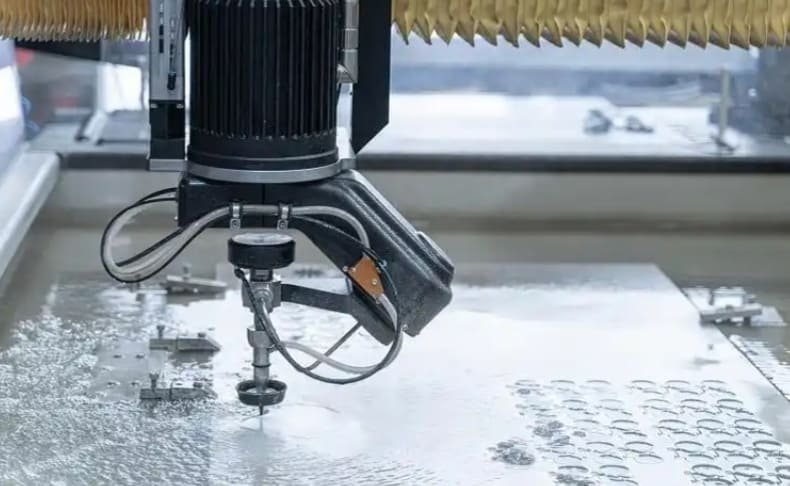
CNC waterjet cutters use a high-pressure stream of water, sometimes combined with an abrasive material like garnet, to cut through a wide range of materials. What makes waterjet cutting unique is that it’s a cold cutting process, meaning it doesn’t produce heat. That’s critical when working with materials that can warp, burn, or change properties due to heat exposure.
Waterjet systems can cut a wide range of materials, including metal, stone, glass, rubber, ceramics, carbon fiber, and even food products. They can handle thick materials too while maintaining tight tolerances. This makes them especially valuable in aerospace, defense, architecture, and high-end fabrication, where material integrity is of utmost importance.
There are two main types:
- Pure waterjets are used for soft materials, such as rubber and foam.
- Abrasive waterjets are used for hard materials, like steel, titanium, or stone.
Water consumption and slurry cleanup are considerations, but the benefits far outweigh them for many industries.
8. CNC Laser Cutters
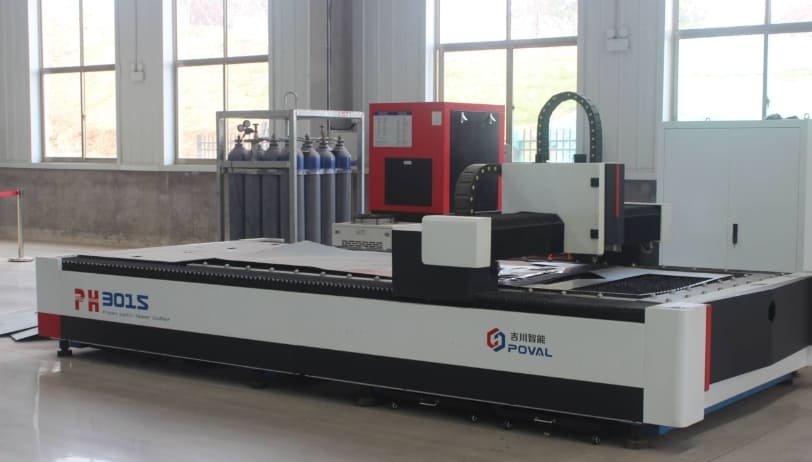
CNC laser cutters use a focused beam of light to cut or engrave materials with extremely high precision. The laser melts, burns, or vaporizes material in a narrow path, making it ideal for clean, detailed cuts. Depending on the machine, the beam is generated by a CO₂ laser, a fiber laser, or an Nd:YAG laser, each with its benefits for different materials.
These machines work exceptionally well for thin metals, such as stainless steel and aluminum, as well as non-metal materials like plastics, wood, acrylic, and ceramics. They’re popular in industries like electronics, aerospace, medical devices, and signage.
Because the tool never physically touches the workpiece, there’s minimal mechanical wear. However, the cutting depth depends on material type and laser power. CO₂ lasers are great for non-metallic materials and some metals, while fiber lasers are faster, more compact, and better suited for high-speed metal cutting.
9. CNC Grinders
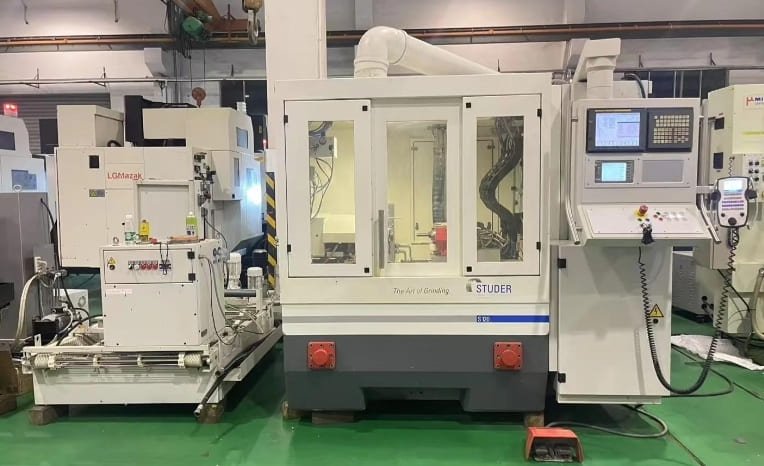
CNC grinders are machines that use abrasive wheels to remove minimal amounts of material for high-precision finishing. They’re often the last step in the machining process, used to refine surface finish, perfect dimensions, or meet extremely tight tolerances.
There are two main types of CNC grinding machines:
Surface Grinders
These are used to produce flat, smooth surfaces on parts like plates, blocks, or die tools. The grinding wheel moves across the surface in multiple passes, gently removing material to get the desired thickness and finish.
Cylindrical Grinders
Used for shaping the outside of round parts like rods, shafts, or bearing races. They rotate the part while the grinding wheel moves in and out across the surface. CNC cylindrical grinders can also produce complex profiles, tapers, and even internal bores when equipped with specialized tooling.
10. CNC Drilling Machines
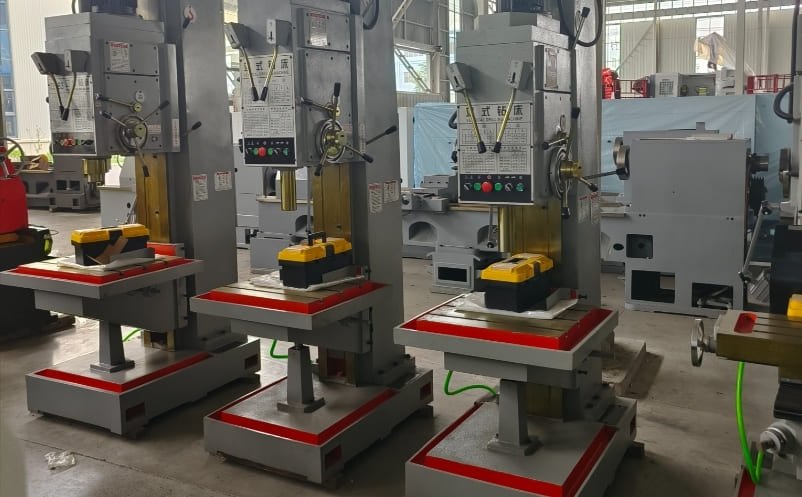
CNC drilling machines are designed specifically to make accurate, repeatable holes in various materials. They use rotating drill bits and move along the Z-axis (up and down) to plunge into the material. While milling machines can drill as well, dedicated CNC drills are faster and more efficient when you need to make lots of holes. Most machines can also move in the X and Y directions, allowing them to drill multiple holes across a flat surface in a single setup.
The holes they produce can be simple through-holes or more complex features, such as countersinks, counterbores, and tapped holes (threaded holes). CNC drilling machines work with metals, plastics, and composites. They’re a go-to choice when precision, speed, and volume matter, such as in circuit board fabrication, automotive engine blocks, or structural metal components. However, choosing the right drill bits and speeds remains vital to prevent heat buildup, tool wear, or part damage.
How to Choose the Right CNC Machine for Your Project
Selecting the right CNC machine depends on the type of product you’re creating, the material you’re working with, and the level of precision or speed required for the job.
Here are the crucial factors to consider:
Match the Machine to the Material
For hard metals like steel or titanium, CNC mills, lathes, and EDM machines provide the power and accuracy needed. Softer materials, such as wood, foam, or plastics, are better suited for use with routers and laser cutters. Waterjet cutters work best for heat-sensitive or layered materials, as they cut without adding heat.
Consider Shape and Design Complexity
If your part has curves, angles, or complex surfaces, go for 5-axis CNC mills or Swiss lathes. For precise holes and fine surface finishes, use CNC drills or grinders. Plasma and laser cutters are ideal for flat shapes and clean edges in sheet materials.
Balance Cost, Precision, and Volume
Swiss lathes and multi-spindle routers are best for high-volume runs. When precision is more important than speed, EDMs and grinders are better choices. If you’re prototyping or testing ideas, 3D printers offer quick, low-cost flexibility.
Factor in Industry Requirements
Aerospace requires ultra-tight tolerances, so wire EDMs and grinders are commonly used. Automotive shops utilize lathes, plasma cutters, and routers to achieve fast and repeatable results. The medical and jewelry fields rely on Swiss lathes and lasers for the production of detailed, micro parts. Electronics manufacturers use routers, drills, and lasers for PCBs and enclosures.
Conclusion
CNC machines come in various types, each serving a distinct role in modern manufacturing. Whether you’re cutting metal, shaping plastic, or building intricate parts, the kind of machine you use directly impacts your precision, speed, and production costs. Choosing the right CNC machine involves finding one that suits your material, part design, and long-term objectives. When appropriately matched, the right machine can boost output, reduce waste, and deliver consistent results for years to come.
At CNCPOR, we don’t just offer CNC machining, we deliver precision, speed, and reliability tailored to your exact needs. Whether you’re building a prototype or scaling up for full production, our advanced equipment and experienced team are here to support you. Contact us today to bring your project to life with the quality it deserves.
FAQs
-
Can one CNC machine type replace another?
Not always. While some CNC machines can handle multiple operations, like milling machines that can drill or cut, each type is designed for specific tasks. Trying to force one machine to do another’s jo can lead to poor results or increased wear and tear. It’s always better to match the machine to the job for accuracy and efficiency.
-
Do all CNC machines require the same programming language?
No. While many CNC machines use G-code as a common base language, different machine types and brands often have their variations or additional commands. For example, a 3-axis mill and a Swiss-type lathe may both use G-code, but the syntax, supported commands, and control interface may differ. So, always check the machine’s controller requirements before programming.
